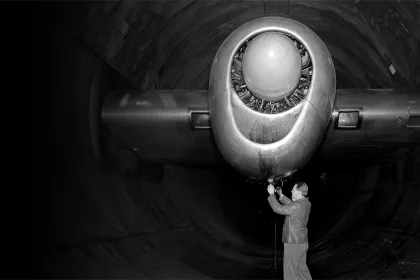With the Formula One season well underway, a mixture of new blood and old rivalries means the competition for the World Championship is closer and fiercer than ever before.
However, while fans around the world follow the fortunes of Hamilton, Vettel, Leclerc and Verstappen, the performance of these drivers on race day is part of a much larger team effort. Team bosses, chief engineers, pit crews and race strategists – each has a valuable role in ensuring the success of their team.
Supporting this group of experts is a wealth of real-time data on everything from track temperature to tyre condition. This information allows teams and drivers to make split-second decisions that can make the difference between winning or losing.
Even away from the track, cutting-edge technology enables teams to simulate racing conditions and then make tweaks to a car’s behaviour that will improve its performance come race day. Knowing how to use the data collected and combine information with expertise and technology is the key to success – a combination that is also crucial to CIOs.
So what CIOs learn from F1 teams?
THE CHAIN IS ONLY AS STRONG AS ITS WEAKEST LINK
Let’s start with the team. You can draw parallels between F1 teams and almost any business. The driver represents the CEO, as the one in the driver’s seat is responsible for making important decisions on the day. But in the same way a driver wouldn’t be asked to drive without intel from a race engineer, a CEO wouldn’t be expected to make decisions on the future of a company without a solid team alongside them.
Particularly important is how, in the same way a race engineer provides the driver with pertinent information throughout the course of a race, the CIO will update the CEO on IT systems and future plans. This is to ensure they are investing in the right technology and supporting the overall business goals to remain competitive.
What’s more, the teamwork demonstrated by F1 teams is something businesses should aspire to replicate. Even England football manager, Gareth Southgate, recognises there is a lot to learn from the F1 teams. In a conversation between Mercedes F1 boss Toto Wolff and the England manager, Wolff told Southgate: “Fear of failure is in all of us. We are trying to build an environment here where we encourage people to take calculated risks, and talk about their shortcomings.” Again, CIOs should take note if they are trying to instill a data-first culture in their workplace which requires buy-in from the many, not the few.
USING DATA TO ENHANCE THE TEAM
There is no sport that uses data to enhance performance quite like Formula 1. With cars hurling round the tracks at speeds of up to 250mph, there is also no sport where it is quite as crucial. Formula 1 cars and drivers are fitted with hundreds of sensors that are constantly monitoring and transmitting all kinds of data from tire pressure to wheel speed. If a driver feels that something might be wrong during a race, race engineers are able to use data to pinpoint exactly what the problem is.
But it’s not just racing teams that benefit from collecting data, so do businesses. Up-to-date information like network data, user data and inbound and outbound queries is what helps inform CIO’s of the next step to take and which investments to make – ultimately upping their chances of success.
The results from the first half of this year’s championship are testament to the importance of data. Take Ferrari – the team were the favourites but only recently got their first win due to previous weaknesses of the car. It just goes to show that even if the driver – or the CEO – is performing well, but the rest of the team are failing to use data effectively and therefore come up with new ideas to increase performance, they can’t win.
MAINTAINING A COMPETITIVE EDGE
Every year F1 teams analyse the results and performance of the car and then invest heavily in the most desirable and advanced technology in order to maintain their competitive edge for the next season. Similarly, CIOs must recognise that technology and new processes are imperative to growing any business.
Pit crews would once have used a stopwatch and a clipboard to track the performance of their team’s car. Seeing as Red Bull recently broke the world record for the fastest pit stop, changing all four of Vestappen’s wheels in 1.88 seconds, clearly this approach would never cut it in today’s fast-paced environment.
For the same reason, a CIO should be focused on thinking ahead to the bigger picture and trends such as whether the business should be investing in blockchain or AI, rather than getting bogged down in the weeds of the day-to-day which is often the case. Failing to do so is like pitting a Mercedes E-Class road car against a championship-leading Mercedes AMG F1 W10 EQ Power+.
What’s more, the technology that CIO’s choose to employ should be based on data driven decisions. There would be no point in an F1 team modifying the car’s soft tires, if data showed the hard tires were the problem. Data provides the means to make informed decisions and technology is what solves problems with ease and keeps you ahead of the game.
Businesses are in a constant race against their competitors. Only with the right team in place and using the right technology supported by the right data can CIO’s help a company to achieve the pole position they need to stay in front.

































